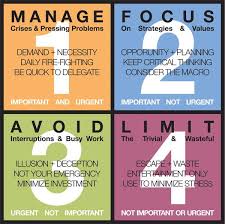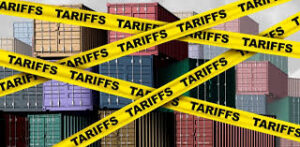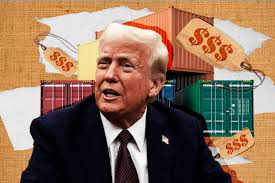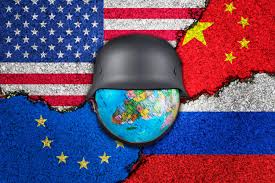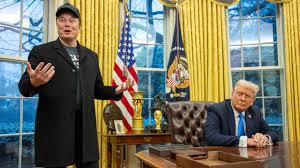15 Brief Essays and Articles Worth Reading
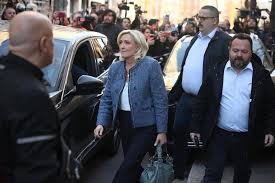
1. “A Rare Trifecta”
Joel Bowman, Substack
Joel Bowman is a smart man and a good writer. In this essay, he highlights three major global developments: a surprising pivot toward peace in Europe regarding the Ukraine conflict, a renewed commitment from Donald Trump to balance the US budget through a “zero deficit” strategy, and political and economic upheaval in Argentina. Read it here.
2. “Biden Lied About Everything…”
Matt Taibbi, Racket News
Matt Taibbi reacts to a NYT exposé detailing how US and NATO leaders, including President Biden, misled the public on the scope and risk of the Ukraine war. The article portrays the revelations as a historic betrayal, alleging that the administration escalated conflict while publicly downplaying nuclear risk for political reasons. Read it here.
3. “The Family of a Murdered Gaza Protester Speaks Out”
Tanya Lukyanova, The Free Press
A harrowing report about the murder of 22-year-old Uday al-Rabbay by Hamas in Gaza. The article includes firsthand accounts from his family, describing his activism against Hamas, the brutal torture he endured, and the chilling message left with his body. It provides rare insight into dissent and repression within Gaza. Read it here.
4. “How Many Millions Are Fraudulently Receiving Social Security Checks…”
Michael Snyder, Substack
Alleging widespread fraud in US entitlement programs, particularly Social Security, the article highlights discrepancies between official enrollment numbers and census data, raises concerns about non-citizens obtaining Social Security numbers, and features Elon Musk as a whistleblower revealing massive abuse in the system. Read it here.
5. “Jay Bhattacharya: ‘Fauci’s Pardon Is a Good Thing’”
Maya Sulkin, The Free Press
An interview with Dr. Jay Bhattacharya, now head of the NIH, reflecting on his public vilification during COVID for opposing lockdowns. He discusses being targeted by Anthony Fauci and Francis Collins but advocates for forgiveness and learning from past mistakes. The article underscores the political and scientific fallout of pandemic-era policies. Read it here.
6. “Lawfare à la Française Against Marine Le Pen”
The Wall Street Journal
An editorial criticizing a French court ruling against right-wing politician Marine Le Pen, suggesting it is politically motivated “lawfare” intended to block her 2027 presidential run. The piece argues the verdict undermines democracy by targeting opposition through legal means rather than open political competition. Read it here.
7. “Luigi Mangione Fans ‘Coming in Hot’ After News of Death Penalty”
Olivia Reingold, The Free Press
After the DOJ announced it would seek the death penalty for Luigi Mangione – charged with murdering UnitedHealthcare’s CEO – his supporters rapidly donated over $12,000 to his legal fund, framing him as a folk hero fighting corporate injustice. The case has sparked widespread online activism, including ballot initiatives targeting insurance companies. Read it here.
8. “No Deportations Without Due Process”
The Free Press
This editorial criticizes the Trump administration’s deportation of pro-Palestinian student activists without public evidence or due process. It centers on the case of Rumeysa Ozturk, a Turkish PhD student accused of ties to Hamas, raising civil liberties concerns and sparking bipartisan alarm over potential violations of free speech. Read it here.
9. “Elon Musk and the American Majority”
The Wall Street Journal
This opinion piece highlights new polling showing strong bipartisan support for reducing government waste – bolstering Elon Musk’s position as head of the Dept. of Government Efficiency despite media attacks. The column argues that Democrats are failing to win over even their own base on spending issues. Read it here.
10. “Why Did Biden Put Tulsi Gabbard Under Government Surveillance?”
Jack Hunter and Rand Paul, Rand Paul Review
Sen. Rand Paul demands answers after learning that Tulsi Gabbard, now Director of National Intelligence, was placed on the TSA’s surveillance list during the Biden administration. The article alleges politically motivated targeting and warns of the growing use of federal surveillance against dissenters. Read it here.
11. “The left AGAIN tries to use the courts to thwart democracy”
Alex Berenson, Unreported Truths
Berenson draws parallels between France’s disqualification of Marine Le Pen from running in 2027 and the American left’s legal tactics against Trump. He frames both as elite-driven efforts to undermine populist political movements through judicial overreach. Read it here.
12. “Trump Wins a Big One on Executive Power”
The Wall Street Journal
The editorial celebrates a DC Circuit ruling that affirms the president’s authority to fire heads of independent federal agencies. The case could head to the Supreme Court, potentially reshaping the balance of power between the executive branch and regulatory bureaucracy. Read it here.
13. “What I Saw at the MAGA Revolution”
Matthew Continetti, The Free Press
Continetti reflects on the ideological evolution of the New Right from 2016 to 2025, noting how Trump-aligned populism has overtaken traditional conservatism. He cautions that the movement now faces a choice: Become a serious governing philosophy or devolve into grievance and chaos. Read it here.
14. “Will Cartel Members Now Face Execution?”
Madeleine Rowley, The Free Press
The US has designated several Mexican cartels as foreign terrorist organizations, expanding its legal power to seize assets and pursue capital punishment. The move signals a dramatic escalation in the war on drug trafficking, with bipartisan support and major implications for US-Mexico relations. Read it here.
15. “Legal Battles Against Trump Advance in Blue-State Territory”
Jess Bravin, The Wall Street Journal
Almost all the 140-plus lawsuits against Trump policies have been filed in federal circuits where Democratic appointees predominate. Conservative groups and Republican-led states funneled lawsuits against Biden administration policies into a handful of jurisdictions, particularly the Fifth Circuit, perhaps the most conservative federal appeals court, which oversees Louisiana, Mississippi, and Texas. Read it here.
10 Brief YouTube Videos for Your Amusement

1. Beatboxer recreating the Thomas the Tank Engine theme song.
Watch Time: 54 sec.
Hiss, a South Korean beatboxer, recreates the theme song for Thomas the Tank Engine (from the children’s show Thomas & Friends) by layering on beats and harmonies emanating entirely through his mouth.
2. Lefties losing it outside Tesla dealerships.
Watch Time: 16 min.
A video report by Ford Fischer documents a series of anti-Elon Musk protests in seven US cities, accompanied by counter protesters defending Musk and Tesla. The piece captures the cultural clash surrounding Musk, with both supporters and detractors expressing strong opinions, often face-to-face, on public sidewalks and in intense exchanges.
3. CouplaBeers commercial.
Watch Time: 2.39 min.
SNL is getting funny again. Here’s a great skit starring and probably written by Sean Gillis, which is why it’s funny.
4. His sportsmanship won everyone’s heart.
Watch Time: 45 sec.
This sort of sportsmanship is rare in professional sports today. But when you see it, it makes you wonder how it became passé.
5. The hairiest face in the world.
Watch Time: 3.14 min.
Hypertrichosis is a very rare disease that caused excessive hair to grow all over his body. In an astonishing display of bad taste on the part of the Guinness organization and an equally shameful level of bad judgement on my part, I bring you Lalit Patidar, a teenager from India, who has just won the World Record for “hairiest face on a male person.” If you watch the entire thing, the guilt you feel about clicking the link may diminish.
6. Amazing billiards shot.
Watch Time: 50 sec.
Got a few seconds for a trick shot in billiards that is hard to believe? (I checked. It’s real.)
7. Gravity explained by Muppets.
Watch Time: 5 min.
You may have heard that one of the fascinating aspects of the law of gravity is that two objects that have very different weights (such as a feather and a bar of lead) will drop to the ground at the same rate of speed. That’s what I thought. Here, two Muppets (that I’ve never seen before) visit Adam Savage (of Tested fame) to explain some of the facts about gravity, such as air resistance.
8. Baby chicks cuddle on a blind cat’s belly.
Watch Time: 1.5 min.
Here’s something to warm your cold heart. A blind cat named Mr. Fox has such a calming personality that he’s able to make the most unlikely of friends – including dogs, rabbits, and even baby birds.
9. Guitarist adds heavy metal to a Bulgarian folk song.
Watch Time: 2.31 min.
I bet you’ve never heard of Bre Petrunko. I didn’t – before I saw this clip of a Bulgarian choir singing it, with Andre Antunes, a Bulgarian rock musician, adding some electronic licks. One critic praised his performance for giving “these singers great respect, letting their voices shine through as he plays.”
I thought it was kind of great, so I looked up the song. Here are the lyrics in Bulgarian…
Bre Petrunko, malay mome
Vse yodime yobidome
Nigde yoro ne naydo me
V vashe selo dor tri yora
Parvo yoro Petrunkino
Petrunitsa yoro vodi
Yozdol ide ludo mlado
Ne se fana na sredata
Nay se fana na tanetso
Na tanetso do Petrunka
S per iko si kitka roni
S nozde si yi ekli kalya
And in English…
Hey Petrunka, young girl
We’ve gone all over
Nowhere did we find a dance
In your village there are three dances
The first dance is little Petrunka’s
Little Petrunka leads the dance
Up came a wild fellow
He doesn’t go to the middle
But he joins at the head
At the head by Petrunka
He tears her bouquet with his forehead
He muddies her slippers with his feet
10. Would you take a ride with this guy?
Watch Time: 3.17 min.
Watch Glorioso, a Peruvian bus driver, navigate an incredibly treacherous route through the rough terrain and tight turns of the Peruvian Andes. Glorioso, who has been driving this route for over 12 years, stated that it requires both calm and confidence.



